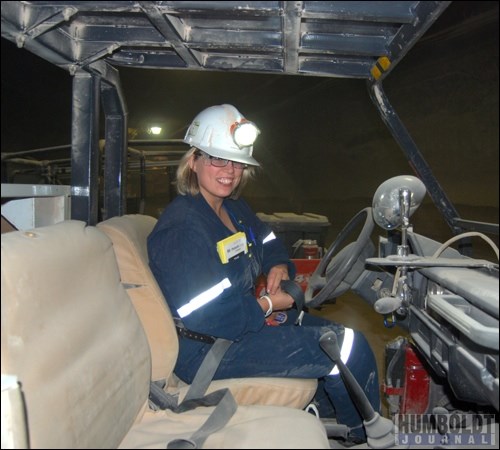For most people in Saskatchewan, a normal day's work takes place above ground. We pound the pavement, drive the roads, plough the fields, reap and sow the earth's surface at our jobs.
But for some people, a normal day's work is going underground - to work in a mine.
The Saskatchewan Mining Association's statistics say 30,500 people are employed in the province's mines. Among those, only some execute their tasks underground.
But each and every one of them wants to go home at the end of their shift. That's why safety awareness at the site is so important.
Mining Week in Saskatchewan is coming up, and to prepare, the Journal went underground at PotashCorp's mine near Lanigan. Geologist Marion Gagnon, one of the few women whose work frequently takes her underground, was the designated tour guide.
Descending 1,000 metres underground in the "cage" (the mine's elevator) to the potash underworld proved to be nothing like the underworld of Hades as represented by the ancient Greeks. The temperature is warm, but it's no brimstone and fire. There is no boatman waiting to ferry you across a river - just a maze of tunnelled roads that allows the workers to navigate between the different levels and into the areas where the potash is being mined.
Jeeps, not boats, are the favoured form of transport for the workers, and before they even set out in one, each employee must check to verify the vehicle has all the necessary tools on board and that it is in running order.
Once the routine inspection is done, Gagnon hops behind the wheel, buckles up, and confidently manoeuvres the jeep along the sprawling dark corridors, with only a single beam of light for guidance. At times, we travel a distance without seeing any sign of life, at other times we see workers at their stations, or pass other vehicles with employees heading to a worksite. The corridors widen and narrow, affording places to store spare equipment or space for a work project to be carried out.
And every so often we pass safety stations, or refuges, tucked away to one side.
These are places, Gagnon explains, where the workers can come if there is a problem underground. In a recess, a large, garage-type door provides access to an area large enough to provide refuge for a half dozen men. Behind the door are cots, first aid supplies, and enough air to keep them alive until help comes.
When questioned, Gagnon emphasized the importance that safety plays for all employees, and how it has been integrated as a number one priority at the site.
"We all have families, and everyone wants to go home every day," Gagnon said. "We take care of one another, we all hang out together. You just have to make sure you're keeping up with the safety requirements in all areas, and by doing that, we have been able to secure a safe work haven for everybody."
Safety is one of the things Rob Bubnick, general manager of the Lanigan mine, is proud to talk about as well.
"We had a phenomenal year in 2011 in the area of safe production," Bubnick told the Journal after the tour. "We use the term safe production here, meaning that we don't do production at this site unless it's safe."
According to Bubnick, the mine made over three million metric tons of finished product, making it a year for record high production as well as a record low number of injuries. A news item posted on PotashCorp's website recognizes the mine at Lanigan for achieving a safety milestone in January 2012: one million hours without a lost time accident.
"We're heading in such a good direction here at our operation," Bubnick added. "I'm just very thankful to all our employees. It definitely takes teamwork to accomplish such great things. I think the culture on our site is continuing to improve and we're all working together and becoming a stronger team because of it."
Mining Week in Saskatchewan (May 20-26) is an annual event that seeks to promote awareness of and about the industry, offering events, lectures and workshops in various locations around the province. For more information about Mining Week, go to www.saskmining.ca.




